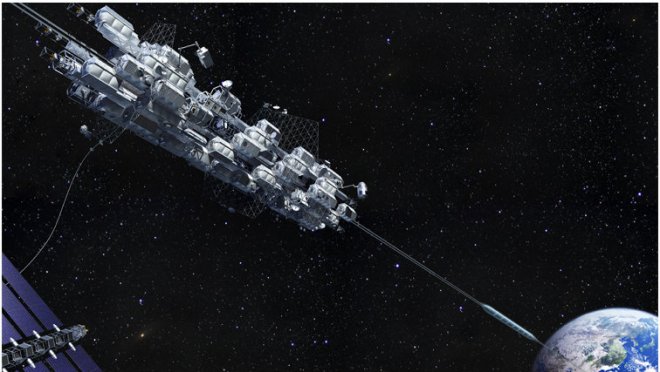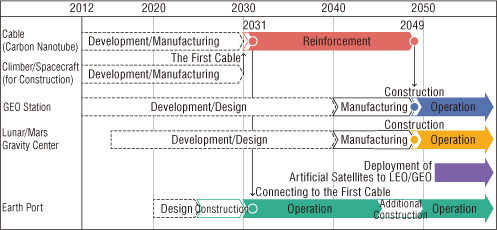
Science fiction writer Arthur C. Clarke, in his 1978 novel, 'Fountains of Paradise', made the concept of space levator popular when he visualized a space elevator on top of a mountain peak in the mythical island of Taprobane.
The fiction stirred up many scientific minds and 40 years have gone by but the Japanese company Obayashi Corp. is determined to go ahead with its plan to build one by 2050, while giants like Google dropped the idea entirely.
The interest in the space elevator is recently revived, albeit, in a video game format by ROCCAT Games which has put the idea to use in its aptly-titled 'Elevator to the Moon' where you are supposed to fix a defunct space elevator to reach the moon.
Otherwise, first theorized by Soviet rocket scientist Konstantin Tsiolkovsky in 1895, the space elevator was perceived as a possible future step to reach the skies and in 1959, the concept of a cable-based structure gained currency though the next half-century proved it futile.
In simple words, the project requires a cable, a vehicle and a counterweight set in geostationary orbit. It has to be anchored at a set point on the equator, with the other end of the cable attached to a counterweight in space at an altitude of over 35,790 kilometers, the height of geostationary orbit.
The major challenge lies in building the light-weight but incredibly strong material required for the elevator. However, Japan's Obayashi Corp. says it is planning to build the future gateway to space by 2050 to take at least 100 travelers to space.
Obayashi Corp.'s space elevator, conceived as a departure port, composes of a 96,000-km carbon nanotube cable, a 400-m diameter floating Earth Port and a 12,500-ton counter-weight. Taking into consideration the cable dynamics, the Japanese space elevator will have a Low Earth Orbit Gate, a Geostationary Earth Orbit Station, a moon gravity center, a Mars Gate and a Solar System Exploration Gate, said the company.
Planned for completion by 2050, the blueprint of the Space Elevator project of Obayashi Corporation envisages a 20-ton cable to be deployed initially, followed by its reinforcement 510 times by climbers up to 7,000 tons, ascending in succession over a period of 18 years. "The current technology levels are not yet sufficient to realize the concept, but our plan is realistic, and is a stepping stone toward the construction of the space elevator," stated the company in its blueprint.
In 2014, Google X's design of a Space Elevator was abandoned after it was found that no one could manufacture a perfectly formed carbon nanotube strand longer than a meter. Here is the biggest challenge that Obayashi Corp. will have to overcome first.









